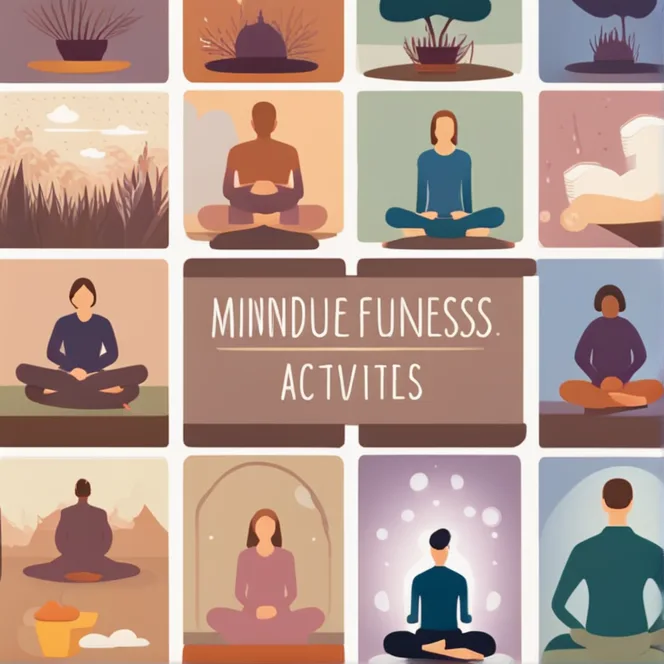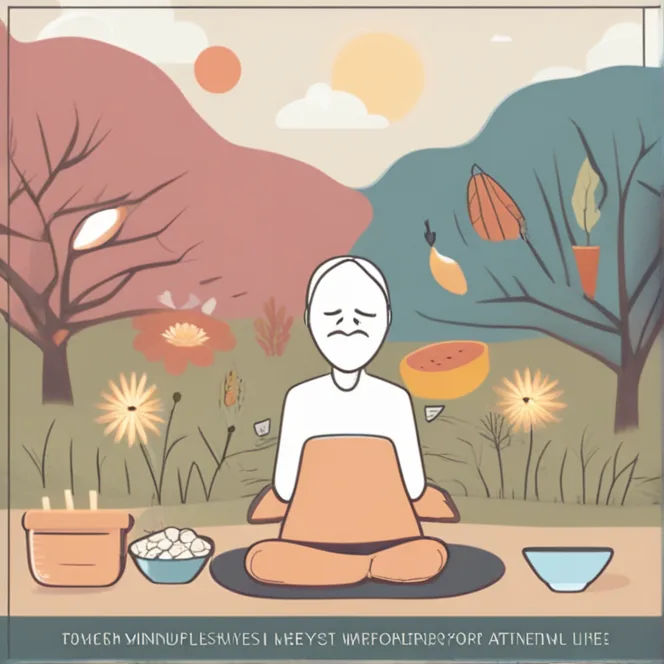
Mindfulness Activities For Everyday Life
Explore simple mindfulness activities to bring calm and focus to your daily routine, enhancing well-being and self-awareness.
article by Hina Kurosawa
The Essence of Mindfulness
While the realms of palmistry, astrology, and biorhythms chart the external influences on our lives, mindfulness brings us back to the internal - the kernel of our existence. At its core, mindfulness is the practice of being present and fully engaged with whatever we are doing at the moment, free from distraction or judgment, and aware of our thoughts and feelings without getting caught up in them. This simple yet profound practice can transform menial tasks into moments of peace and clarity. To begin, set aside a few moments each day to focus on your breath, observing its rhythm and flow.

Mindful Morning Rituals
How we start our day often sets the tone for the hours that follow. Mindful morning rituals can be as simple as savoring your first sip of coffee or tea in silence, noticing the warmth of the cup, the aroma, the taste on your palate. Alternatively, as you shower, pay attention to the sensation of water against your skin rather than planning your day. These acts of presence can ground you, offering a calm start to even the busiest of schedules. Over time, these rituals serve as daily anchors, reminding you to return to the present throughout your day.

Mindfulness in Motion
Mindful walking is an excellent way to combine movement with awareness. As you walk, whether it be a stroll through the park or simply moving from one room to another, pay attention to the feeling of your feet touching the ground, the rhythm of your gait, and the sway of your arms. This activity can be a moving meditation and a way to reconnect with your environment and body. It's also a subtle reminder that life's journey is about each step rather than just the destination.

Attentive Eating
Eating is a daily necessity and thus provides a perfect opportunity for mindfulness practice. Mindful eating involves eating slowly and without distraction, savoring each bite, and noticing the textures, colors, and tastes of your food. It also includes acknowledging your body's hunger and fullness signals, transforming a routine activity into a deliberate and enjoyable practice. This form of awareness can lead to a healthier relationship with food and eating habits.

Conscious Communication
Practicing mindfulness in our interactions with others can lead to richer, more compassionate relationships. When listening to someone, give them your full attention without forming responses in your mind before they have finished speaking. When it's your turn to speak, do so purposefully and honestly, taking a moment to consider your words. This mindful exchange fosters deeper understanding and connection, paving the way for more meaningful conversations.
Breathing Exercises
Breathing exercises are a cornerstone of mindfulness practice, as our breath is a constant companion that can serve as a tool to anchor us in the present. Simple techniques like the "4-7-8" method—inhaling for four counts, holding the breath for seven counts, and exhaling for eight counts—can have a calming effect on the nervous system, helping to reduce stress and foster tranquility. Integrating these exercises throughout your day, especially during periods of tension, can make a significant impact on your overall well-being.
Reflective Journaling
Maintaining a mindfulness journal encourages reflective practice and self-discovery. Each day, write down your experiences and observations without judgment. This can include your reactions to events, your interactions with others, or the emotions you felt at different times of the day. Journaling is a powerful way to process your thoughts and feelings, ultimately leading to greater self-awareness and intentionality in how you live your life.
Published: 12/8/2023
Modified: 12/8/2023
More predictions
Come back here soon to learn more about yourself and your future


Mindfulness vs. Meditation: Understanding The Distinction
Explore the subtle differences between mindfulness and meditation, and learn how they contribute to your well-being in this insightful article.


Mindfulness Meditation For Pain Management
Discover how mindfulness meditation can be a powerful tool for managing and reducing pain, offering a natural, holistic approach to pain relief.


The Synergy Of Mindfulness & Technology
In the age of constant connectivity and digital distractions, the quest for inner peace and mindfulness remains a timeless pursuit. It's no wonder that individuals are increasingly turning to technology to aid them on this journey. Biofeedback, a cutting-edge technology that provides real-time data on physiological processes, is emerging as a powerful complement to traditional meditation practices. This article explores the fascinating synergy between biofeedback and meditation, shedding light on how these seemingly disparate worlds are converging to enhance mental well-being and self-awarenessю